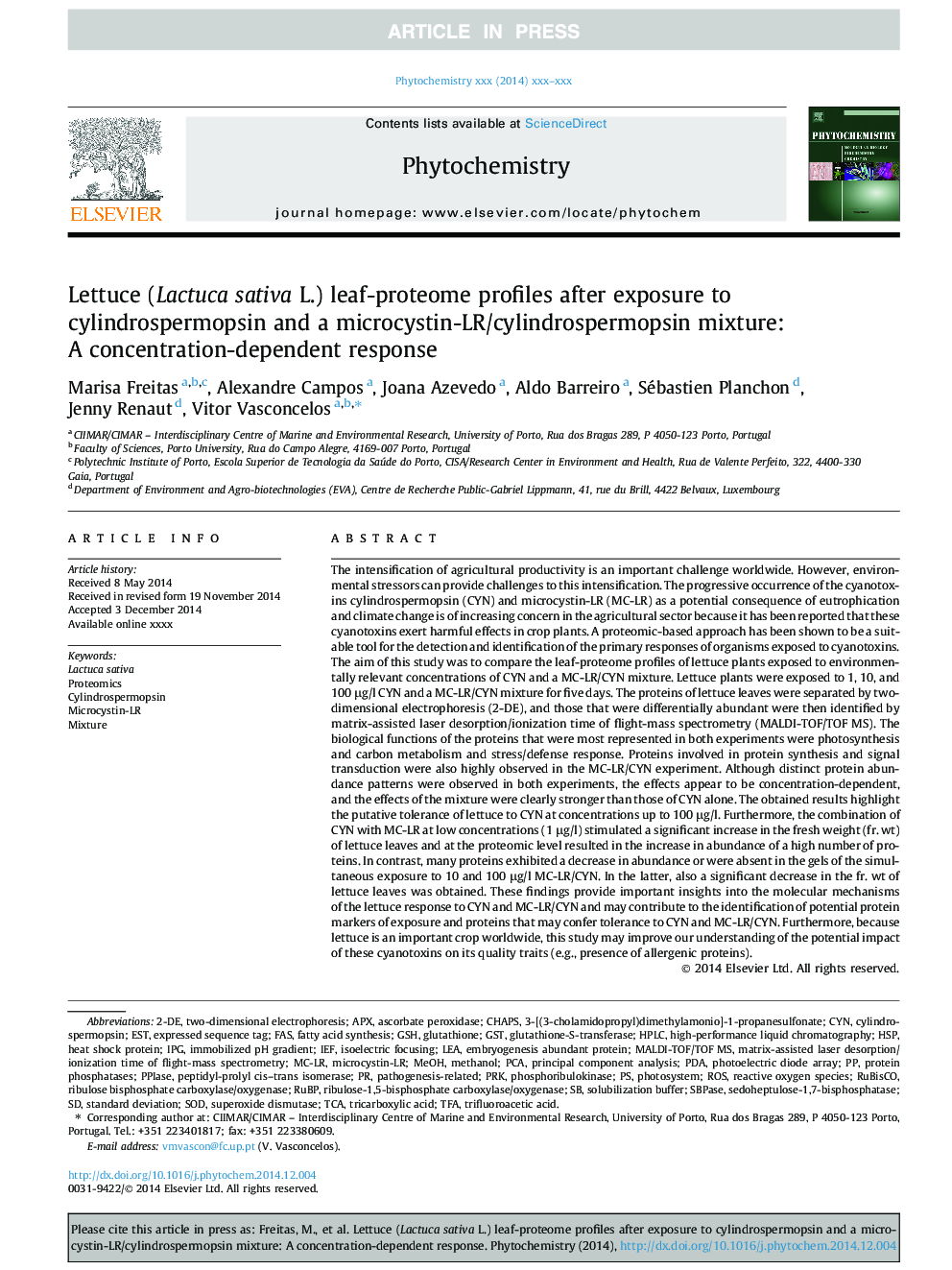| Article ID | Journal | Published Year | Pages | File Type |
|---|---|---|---|---|
| 5164539 | Phytochemistry | 2015 | 13 Pages |
Abstract
Although the effects of the mixture were stronger than those of CYN alone, in both experiments they seem to have been concentration-dependent and proteins involved in photosynthesis/carbon metabolism and stress/defense response were the most differentially changed in abundance.
Keywords
LEAPPIasePRKSBPaseHspCylindrospermopsinRuBPIEFTFALactuca sativa2-DEAPXGSTGSHTCAFASRuBisCOsedoheptulose-1,7-bisphosphatasePDAMC-LRIPGimmobilized pH gradientPCApeptidyl-prolyl cis–trans isomeraseribulose-1,5-bisphosphate carboxylase/oxygenaseROSESTTrifluoroacetic acidtricarboxylic acidTwo-dimensional electrophoresisstandard deviationPrincipal component analysisisoelectric focusingExpressed Sequence Tagribulose bisphosphate carboxylase/oxygenaseSODFatty acid synthesisSuperoxide dismutasePhotosystemPhosphoribulokinaseCYNMALDI-TOF/TOF MSMethanolmixturepathogenesis-relatedMeOHmicrocystin-LRascorbate peroxidaseProteomicsHeat shock proteinprotein phosphatasesCHAPShigh-performance liquid chromatographyHPLCGlutathioneglutathione-S-transferaseReactive oxygen species
Related Topics
Physical Sciences and Engineering
Chemistry
Organic Chemistry
Authors
Marisa Freitas, Alexandre Campos, Joana Azevedo, Aldo Barreiro, Sébastien Planchon, Jenny Renaut, Vitor Vasconcelos,
